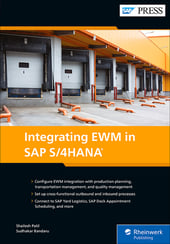In today’s fast-paced world of logistics, the demand for efficient and productive warehouse operations has never been greater.
Thankfully, the advent of warehouse automation systems has brought about a transformative change in the industry. By integrating cutting-edge technology and advanced robotics, these systems have streamlined processes, minimized errors, and significantly increased operational efficiency.
A warehouse automation system involves the implementation of different software and technologies to automate and streamline the various processes associated with managing and operating a warehouse. These technologies can include AGV systems, material flow systems, WMSs, conveyor systems, robotics systems, and automated storage and retrieval systems. Numerous businesses across various industries are using warehouse automation to optimize their supply chain management and improve overall productivity.
The aim of warehouse automation is to enhance the efficiency, precision, and swiftness of warehouse tasks, while simultaneously minimizing costs and errors. By automating inventory management, order processing, and material handling activities, warehouse automation facilitates organizations to enhance their supply chain management and overall productivity.
At the heart of a warehouse automation system are several key components working in harmony to optimize every aspect of the supply chain. First and foremost, automated storage and retrieval systems play a vital role. These systems utilize computer-controlled mechanisms to handle the storage and retrieval of goods, eliminating the need for manual intervention and maximizing space utilization.
Next, robotic picking systems have emerged as game-changers. Equipped with sensors and advanced algorithms, these robots navigate through the warehouse, accurately identifying and picking items for order fulfillment. By eliminating human error and drastically reducing picking time, these systems have revolutionized the e-commerce sector.
Conveyors and sortation systems are another integral part of warehouse automation. These systems transport goods seamlessly throughout the warehouse, ensuring timely and efficient movement from one area to another. They enable continuous flow and facilitate the sorting and routing of items based on predefined criteria, optimizing order processing.
To manage and orchestrate these complex operations, WMSs provide the necessary intelligence. WMS software integrates with various components of the automation system, overseeing inventory control, order processing, and real-time tracking. This centralized control ensures smooth coordination and enhances visibility across the supply chain.
Finally, to ensure a safe and secure working environment, AGVs have gained prominence. These autonomous vehicles navigate through the warehouse, transporting goods, and even interacting with other automation components. With built-in safety measures and efficient route planning, AGVs contribute to reducing accidents and improving operational efficiency.
Businesses can utilize various types of automation systems to streamline their warehouse operations, which include the following:
- Conveyor systems: These automated systems transport goods from one location to another within a warehouse.
- Automated storage and retrieval systems: These systems utilize computer-controlled cranes to retrieve and store products in high-density storage systems.
- Robotics systems: These systems employ robots for tasks like palletizing, depalletizing, and order picking.
- AGVs: These unmanned vehicles transport products through the picking process, enhancing accuracy and speed.
- Automated packing systems: These systems automatically package products for shipping.
- Automated labeling systems: These systems label products with barcodes and other identifying information automatically.
- Sortation systems: These systems sort and distribute products according to predetermined criteria.
- Pick-to-light systems: These systems employ lights to guide workers through the picking process, which results in higher accuracy and speed.
- Pick by voice/augmented reality (AR): This warehouse automation system uses speech recognition technology to guide warehouse workers through the picking process.
- WMSs: These systems manage and optimize warehouse operations, including inventory management, order processing, and shipping and receiving.
In general, these automation systems can improve efficiency, increase productivity, reduce errors, and lower labor costs for businesses.
Starting with SAP EWM 5.1, an integration option for automated warehouses has been available. This integration allowed for the connection of programmable logic controllers (PLCs) to various systems such as conveyor belts, rack feeders, lifts, and more through SAP EWM.
One key aspect of integrating SAP EWM with warehouse automation systems is the exchange of real-time data and information. Automated systems such as conveyor belts, sorters, robots, and automated storage and retrieval systems are equipped with sensors and other technologies that capture data on inventory movements, order statuses, and equipment performance. This data is seamlessly shared with SAP EWM, providing accurate and up-to-date information for decision-making and process optimization.
By integrating with warehouse automation systems, SAP EWM can effectively manage and orchestrate various automated processes. For example, it can control and monitor the movement of AGVs within a warehouse, ensuring efficient material flow and picking processes. It can also coordinate with robotic systems for tasks such as picking, packing, and palletizing, improving order fulfillment speed and accuracy.
Furthermore, integration with warehouse automation systems allows SAP EWM to optimize resource utilization and warehouse layout. The system can analyze real-time data from automated equipment, such as storage capacity, equipment availability, and congestion points, to make intelligent decisions on task assignment, equipment allocation, and routing. This optimization minimizes unnecessary movements, reduces idle time, and maximizes the use of available resources, leading to improved throughput and operational efficiency.
Another significant benefit of integrating SAP EWM with warehouse automation systems is enhanced traceability and visibility. Automated systems generate a wealth of data regarding inventory movements, picking and packing processes, and quality control. By integrating this data with SAP EWM, businesses can have a comprehensive view of their warehouse operations in real-time. They can track the progress of orders, identify bottlenecks, and proactively address any issues that may arise.
Furthermore, SAP EWM can be integrated with various other warehouse automation systems, including the following:
- Material flow systems
- SAP Warehouse Robotics for robotic integration
- Automated storage and retrieval systems
- AGVs
Editor’s note: This post has been adapted from a section of the book Integrating EWM in SAP S/4HANA by Shailesh Patil and Sudhakar Bandaru.



Comments